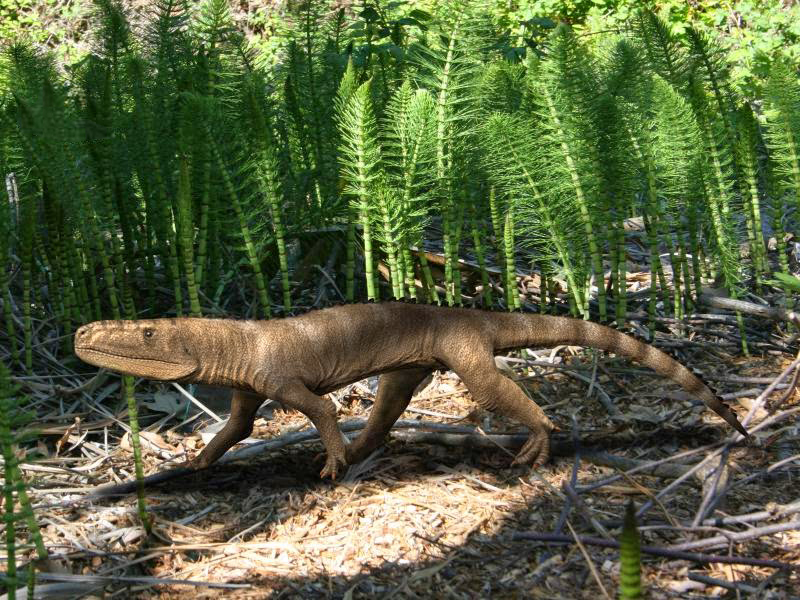From the first moment you walk into a natural history museum and encounter a towering Tyrannosaurus rex or a magnificent Diplodocus, there’s an undeniable sense of wonder. These massive prehistoric creatures, brought back to life through meticulous scientific reconstruction, connect us to Earth’s distant past. But have you ever wondered how scientists and museum professionals transform scattered fossil fragments into the complete skeletons that captivate millions of visitors each year? The process is a remarkable blend of paleontology, artistry, engineering, and detective work that has evolved dramatically since the first dinosaur displays of the 19th century.
The Discovery Process: From Field to Lab
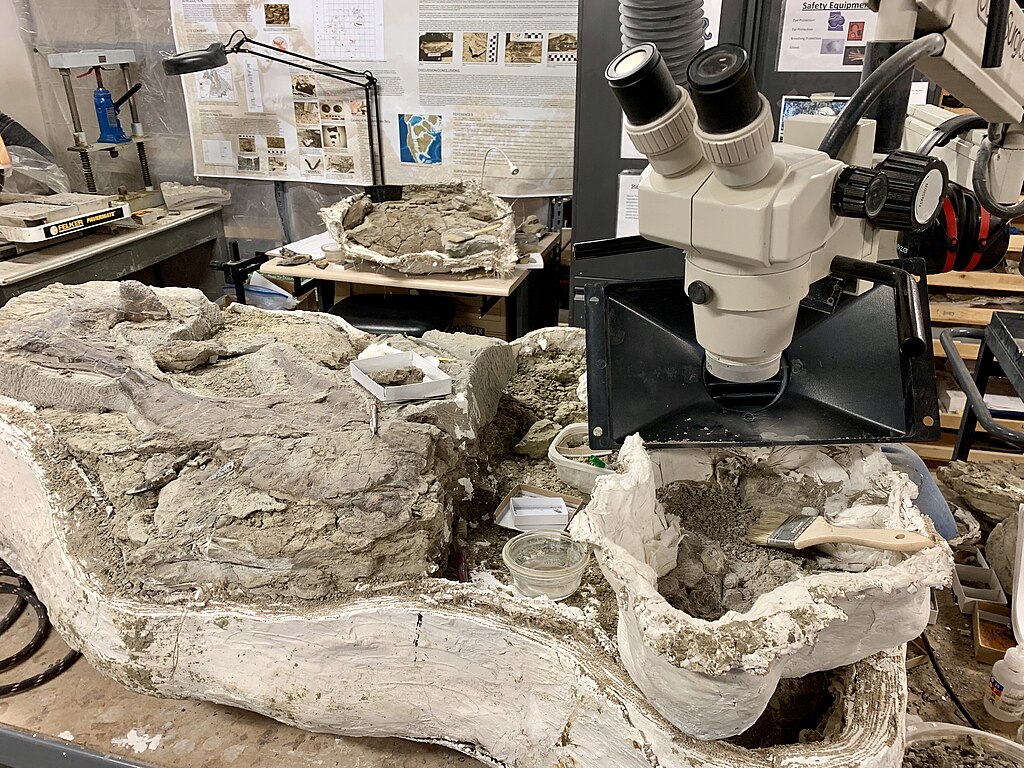
The journey of a museum dinosaur begins not in the exhibition hall, but in the field, where paleontologists conduct careful excavations of fossil sites. These expeditions often take place in remote locations with challenging conditions, from scorching deserts to frigid mountain ranges. When fossils are discovered, scientists meticulously document their position in the sedimentary layers, which provides crucial information about the animal’s age and environment. The fossils are then carefully excavated, often encased in protective plaster jackets called “field jackets” to prevent damage during transport.
This delicate extraction process can take weeks or even months for larger specimens, with teams carefully removing surrounding rock while leaving the fossils intact. Back at the laboratory, skilled preparators use specialized tools like air scribes and dental picks to remove the remaining rock matrix from the fossils, revealing the preserved bones that will eventually become part of a museum display.
Fossil Assessment and Identification

Once cleaned, paleontologists face the challenging task of identifying which dinosaur species the fossils represent. This process involves comparing the newly discovered bones with previously described specimens and analyzing distinctive anatomical features. Modern techniques include CT scanning and 3D modeling to examine internal structures without damaging the fossils. Scientists must determine if they’re dealing with a known species or potentially a new one altogether. This identification phase also involves assessing how complete the specimen is – a critical factor that will influence the reconstruction approach.
Most dinosaur fossils are incomplete, with many species known from just 20-30% of their total skeleton. The famous T. rex specimen “Sue” at Chicago’s Field Museum is exceptional, with about 90% of its skeleton recovered. When fossils from multiple individuals of the same species are found together, researchers must carefully determine which bones belong to which individual, using factors like size, developmental stage, and preservation quality.
Filling in the Missing Pieces

The reality of dinosaur reconstruction is that paleontologists rarely find complete skeletons. In fact, many famous museum mounts are composites assembled from several different individuals. When crucial bones are missing, scientists must use various methods to create substitute parts. One approach is to mirror-image existing bones from the opposite side of the body, taking advantage of bilateral symmetry. For example, if a left femur is discovered but the right one is missing, technicians can create a mirrored copy.
For entirely missing elements, researchers might adapt bones from closely related species, scaling them appropriately to match the specimen’s proportions. Modern museums typically use 3D printing and casting techniques to create these replacement parts, which are carefully marked or colored differently from the real fossils to maintain scientific integrity. This transparency about what is genuine and what is reconstructed has become an ethical standard in museum displays, though this wasn’t always the case in early paleontological history.
The Role of Comparative Anatomy

Comparative anatomy serves as the foundation for accurate dinosaur reconstructions, allowing scientists to make educated inferences about missing skeletal elements. By studying the anatomical patterns across related species, paleontologists can predict the likely structure of unknown parts based on evolutionary relationships. This approach relies on the principle that closely related animals share similar anatomical features due to their common ancestry.
For instance, all theropod dinosaurs (the group including T. rex and Velociraptor) share certain skeletal characteristics that differ from those of ornithischians (like Triceratops) or sauropods (like Brachiosaurus). Museum preparators also look to modern animals for insights, particularly birds, which are the living descendants of dinosaurs.
Crocodilians provide another useful reference point as the closest living relatives to the dinosaur-bird lineage. By analyzing joint structures, muscle attachment points, and overall body proportions in these modern animals, scientists can make more informed decisions about how dinosaur skeletons should be assembled and positioned.
Engineering Challenges in Mounting Dinosaurs
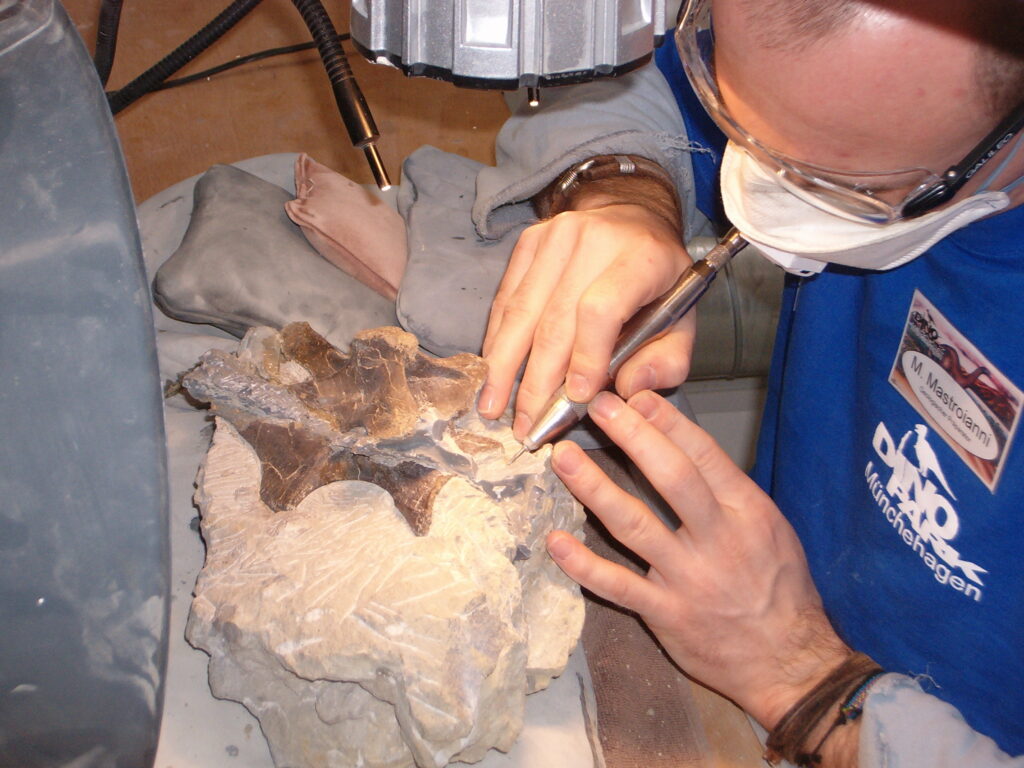
Creating a freestanding dinosaur skeleton presents significant engineering challenges, particularly for larger specimens weighing hundreds or thousands of pounds. Modern museum mounts typically utilize internal metal armatures – custom-designed frameworks that support the weight of the fossils while remaining as unobtrusive as possible. These sophisticated support systems must account for the center of gravity of the assembled skeleton while minimizing stress on fragile fossil bones.
In many cases, the real fossils are too heavy or fragile to display, leading museums to create lightweight casts from the originals. This approach protects the irreplaceable fossils while allowing visitors to appreciate the complete skeleton. For exceptionally large dinosaurs like Diplodocus or Brachiosaurus, engineers must consider floor loading limits and structural supports within the building itself.
The infamous collapse of a Diplodocus mount at the Natural History Museum in London in the 1970s serves as a cautionary tale about the importance of proper engineering in these massive displays. Today, advanced computer modeling helps predict stress points and design optimal support structures before construction begins.
Determining the Correct Posture
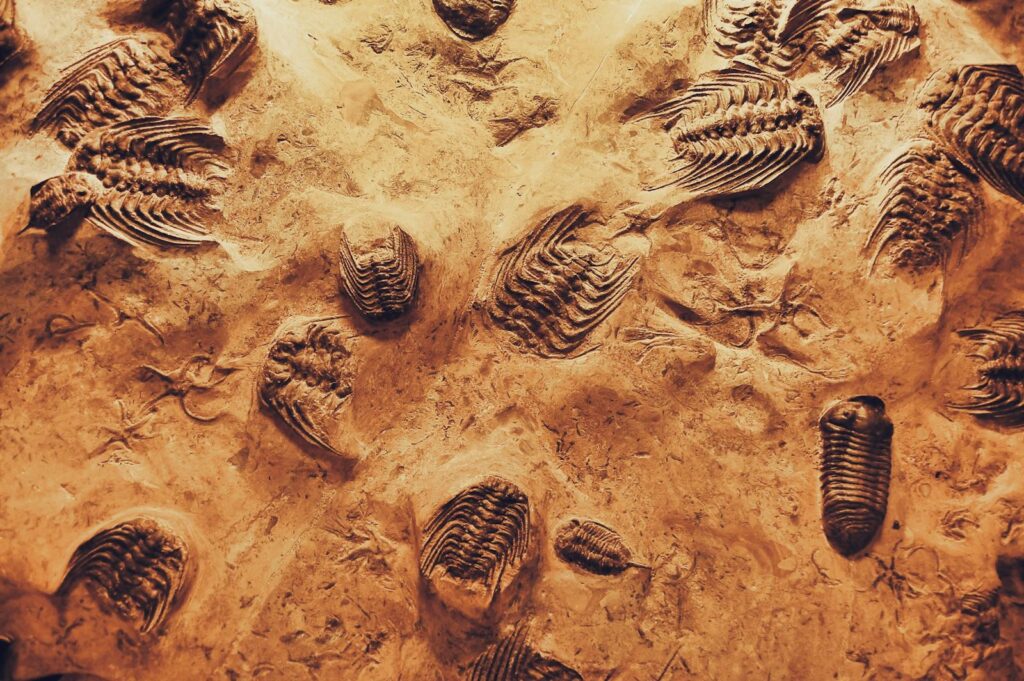
One of the most challenging aspects of dinosaur reconstruction is determining the correct posture and stance of the animal. Early museum mounts often depicted dinosaurs in upright, kangaroo-like poses with dragging tails – interpretations we now know were inaccurate. Modern reconstructions rely on detailed analysis of joint articulations to understand the natural range of motion possible for each part of the skeleton. The orientation of muscle attachment sites provides crucial evidence about how the animal held itself and moved. Trace fossils, such as footprints and trackways, offer direct evidence of how dinosaurs positioned their limbs while walking.
Scientific understanding of dinosaur posture has evolved dramatically over the decades, with theropods now depicted in a more horizontal stance with raised tails, and sauropods shown with raised, rather than dragging, tails. Even the iconic Tyrannosaurus rex has undergone multiple postural revisions, from the upright monster of early displays to the more balanced, horizontally-oriented predator shown in contemporary exhibits.
The Evolution of Museum Display Techniques
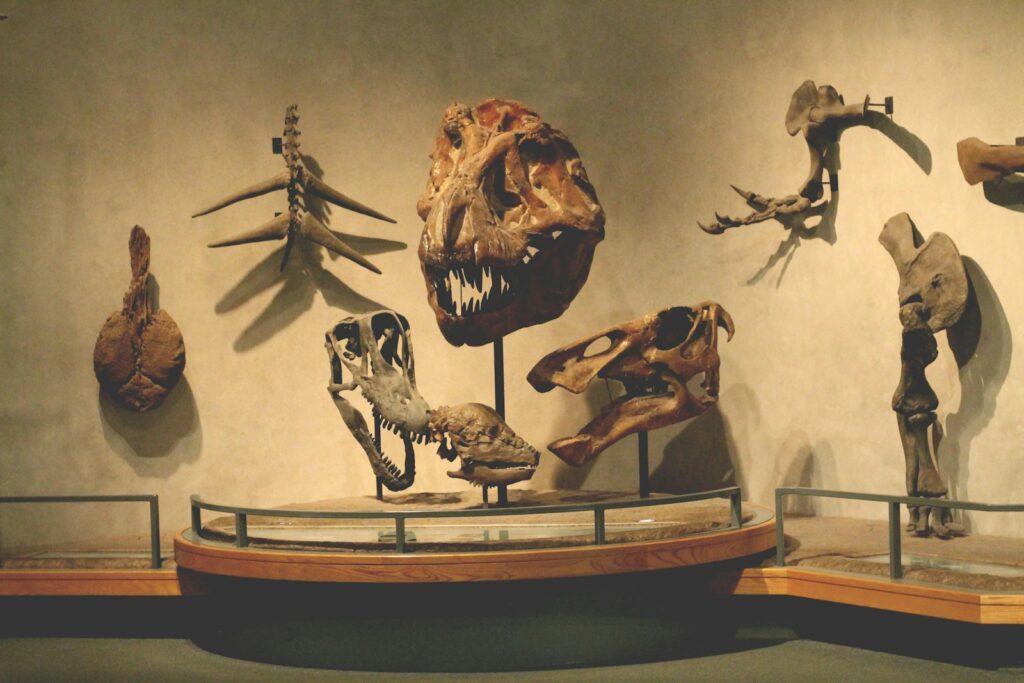
The history of dinosaur displays reflects changing scientific understanding and museum philosophy over the past 150 years. The first mounted dinosaur skeleton, Hadrosaurus foulkii, unveiled at Philadelphia’s Academy of Natural Sciences in 1868, represented a revolutionary approach to natural history displays. Early reconstructions often emphasized the monstrous and sensational aspects of dinosaurs, sometimes at the expense of scientific accuracy.
Through the 20th century, mounted skeletons typically showed dinosaurs as slow, lumbering creatures with dragging tails. The “Dinosaur Renaissance” of the 1970s and 1980s transformed these interpretations, presenting dinosaurs as active, dynamic animals. Modern displays increasingly incorporate technology like augmented reality, animation, and interactive elements to help visitors visualize how these animals moved and behaved in life.
Contemporary museums also place greater emphasis on contextualizing dinosaurs within their ecosystems, often placing skeletons in naturalistic poses that suggest behavior or interaction with the environment. This evolution reflects both advancing scientific knowledge and changing public expectations about engaging with natural history.
The Art of Dinosaur Reconstruction

Bringing dinosaur skeletons to life in museums requires not just scientific knowledge but also considerable artistic skill. Paleoartists and museum preparators must make countless aesthetic decisions while staying true to the scientific evidence. The positioning of each bone, the flow of the overall silhouette, and the dynamic quality of the pose all contribute to the visitor’s experience and understanding of the animal.
Beyond technical accuracy, successful dinosaur mounts convey a sense of the living animal’s presence and character. The tension in a predator’s stance or the graceful curve of a sauropod’s neck speaks to the artistic sensibility of the reconstruction team. This integration of art and science extends to the museum environment surrounding the skeleton, including lighting design, backdrop paintings, and accompanying models or illustrations.
Some of history’s most influential dinosaur reconstructions, like Charles R. Knight’s paintings or the dynamic skeletons mounted by the Smithsonian’s Norman Boss, have shaped public imagination as much through their artistic power as their scientific content.
Modern Technologies Revolutionizing Reconstruction
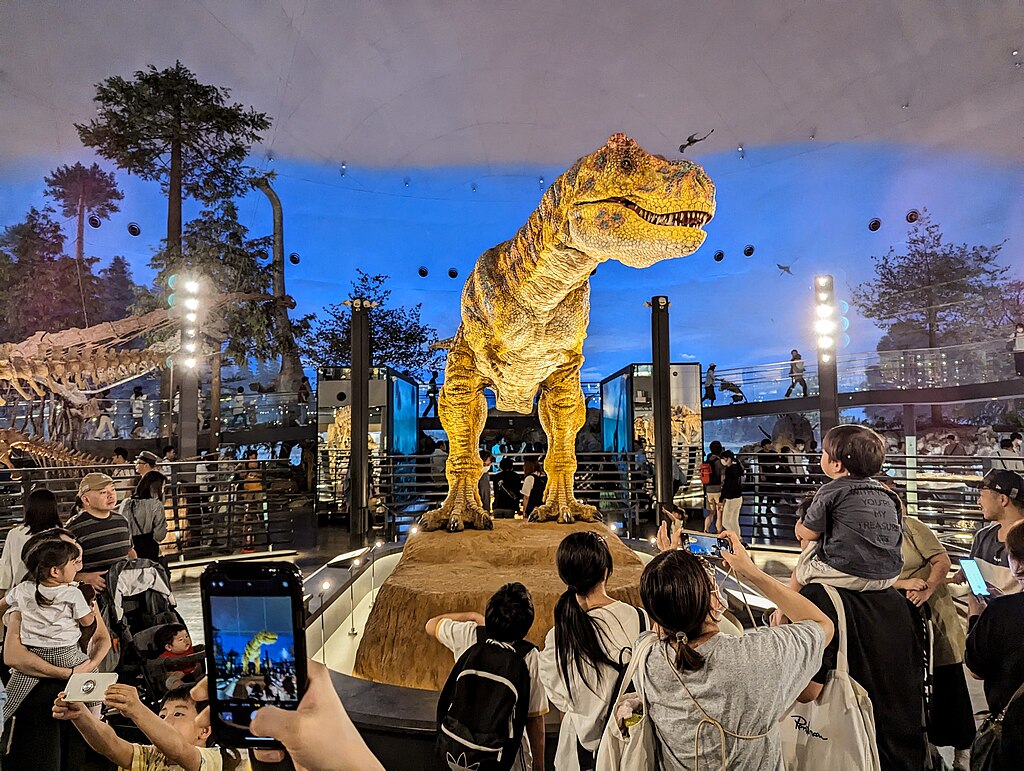
The digital revolution has transformed how museums approach dinosaur reconstruction. Sophisticated CT scanning technology allows paleontologists to examine fossil details that would be impossible to see otherwise, including internal structures and minute features. Photogrammetry techniques create precise 3D digital models from photographs, enabling researchers to study specimens remotely and collaborate internationally.
For museum displays, 3D printing has revolutionized the creation of missing elements, allowing precise duplicates or mirror images to be produced quickly and accurately. Digital modeling programs help visualize complete skeletons before physical mounting begins, letting teams experiment with different poses and arrangements. These technologies also facilitate the creation of lightweight, durable casts that can be used in place of fragile original fossils.
Advanced engineering software helps design support structures that are both visually unobtrusive and structurally sound, even for the largest dinosaurs. Some museums now maintain digital archives of their specimens, creating virtual collections that complement their physical displays and provide resources for researchers worldwide.
Reconstructing Soft Tissues and Appearance

While skeletons form the foundation of dinosaur displays, museums increasingly incorporate information about soft tissues and external appearance in their reconstructions. Rare fossil impressions of skin, scales, and even feathers provide direct evidence about surface textures for some species. For dinosaurs without such preserved impressions, paleontologists make inferences based on closely related animals. Muscle attachment sites on bones offer clues about the size and arrangement of major muscle groups, helping visualize the animal’s overall body shape.
Modern museums often display models or illustrations alongside skeletons to show how the living animal might have appeared. The discovery that many theropod dinosaurs possessed feathers has dramatically changed depictions of species like Velociraptor, which were once shown with reptilian scales but are now portrayed with avian-like plumage.
Color remains more speculative, though microscopic structures called melanosomes preserved in some exceptionally well-preserved fossils have provided evidence of coloration patterns in a few dinosaur species. These reconstructions of the complete animal help visitors connect with dinosaurs as once-living creatures rather than just assemblages of bones.
Famous Case Studies in Dinosaur Mounting

“Sue” the Tyrannosaurus rex at Chicago’s Field Museum, represents one of the most complete and carefully mounted dinosaur skeletons ever displayed. Discovered in South Dakota in 1990, Sue’s reconstruction involved years of preparation and a custom-designed support system that allows researchers to access individual bones for study. The Diplodocus nicknamed “Dippy,” originally mounted at London’s Natural History Museum in 1905 and later replicated for museums worldwide, illustrates how iconic dinosaur mounts can become cultural ambassadors.
The mounting of “Leonardo,” an exceptionally preserved Brachylophosaurus with extensive skin impressions at the Children’s Museum of Indianapolis, demonstrates how rare soft tissue evidence can inform skeletal reconstructions. The controversial mounting history of “Big Mike,” the Tyrannosaurus at the Museum of the Rockies, reflects changing scientific interpretations – initially installed in an upright stance in the 1990s, it was later remounted in a more horizontally balanced pose based on new research. Each of these famous specimens tells not just the story of prehistoric life but also chronicles the evolving science of paleontological reconstruction.
Ethical Considerations in Dinosaur Displays
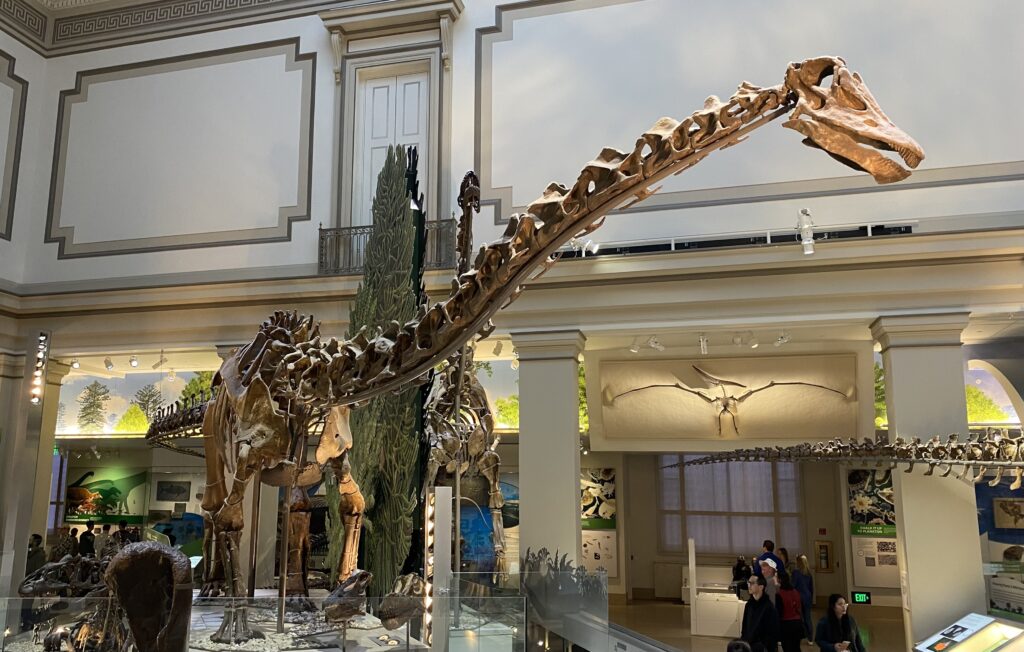
Modern museum practice embraces transparency about which parts of a mounted skeleton are original fossils and which are reconstructions. Many institutions use different colors or textures to distinguish between actual fossil material and recreated elements, helping visitors understand the extent of scientific interpretation involved. The acquisition history of fossils has also become an important ethical consideration, particularly for specimens collected from indigenous lands or countries with developing heritage protection laws.
Some museums are reevaluating their collections and working toward repatriation of fossils that may have been inappropriately obtained. The commercial fossil market presents another ethical challenge, as scientifically valuable specimens sold to private collectors may become inaccessible to researchers. Museums increasingly emphasize collaborative relationships with the communities where fossils are found, acknowledging local stewardship and incorporating indigenous perspectives where appropriate. The scientific accuracy of reconstructions presents its own ethical dimension – museums must balance engaging presentations with responsible interpretation of evidence, clearly distinguishing between well-supported conclusions and more speculative elements.
The Future of Dinosaur Reconstruction

The field of dinosaur reconstruction continues to evolve rapidly, driven by new fossil discoveries and technological innovations. Virtual and augmented reality applications are creating immersive experiences that show dinosaurs in motion, complementing traditional skeletal displays. Some museums are experimenting with animated models that demonstrate how dinosaur skeletons would have moved, using robotics and computer simulations based on biomechanical analysis.
Advances in molecular paleontology may eventually provide more precise information about soft tissues and even genetic relationships. New techniques for analyzing microscopic structures in fossils continue to reveal surprising details about dinosaur biology, from growth patterns to possible evidence of behavior. As our understanding of dinosaur physiology, locomotion, and ecology becomes more sophisticated, museum displays will continue to be updated to reflect current scientific consensus.
The growing emphasis on dinosaur-bird connections is likely to feature prominently in future exhibits, highlighting evolutionary continuity rather than treating dinosaurs as extinct oddities. Despite these technological advances, the carefully mounted skeleton will likely remain the centerpiece of dinosaur exhibits, continuing to inspire wonder while anchoring more speculative interpretations in the solid evidence of the fossil record.
Conclusion

The reconstruction of dinosaur skeletons represents one of the most fascinating intersections of science, art, and public education. Each mounted specimen tells multiple stories – the life history of an animal that lived millions of years ago, the geological processes that preserved its remains, the scientific detective work that interpreted its structure, and the evolving human understanding of Earth’s prehistoric past.
From the painstaking fieldwork that recovers fossil fragments to the engineering marvels that support massive mounted skeletons, these reconstructions embody both meticulous scientific methodology and creative vision. As techniques continue to advance, our dinosaur displays will grow ever more accurate and informative, but they will always retain their power to inspire wonder and curiosity about the remarkable creatures that once dominated our planet.




